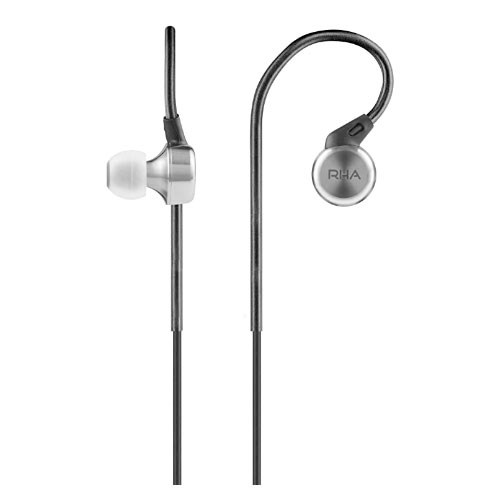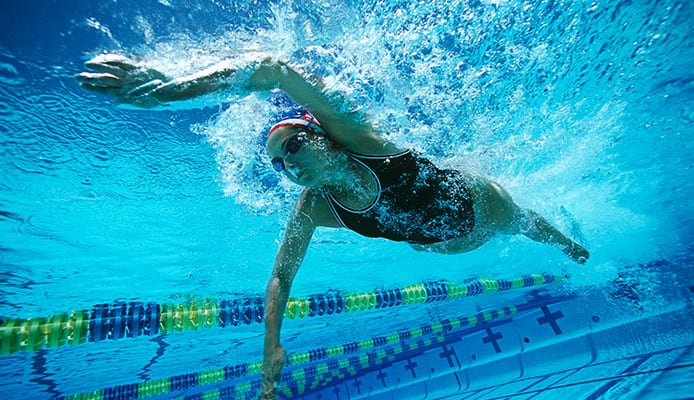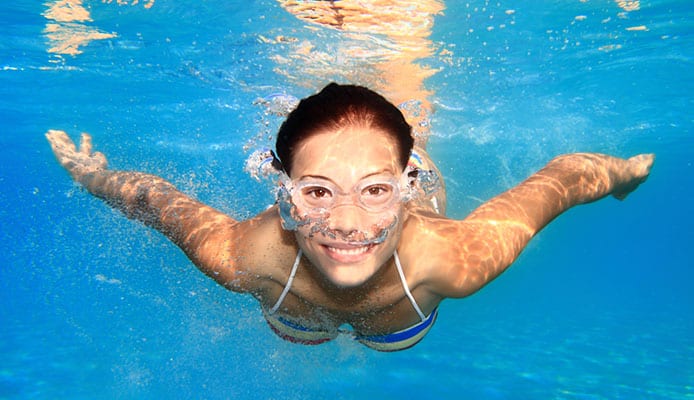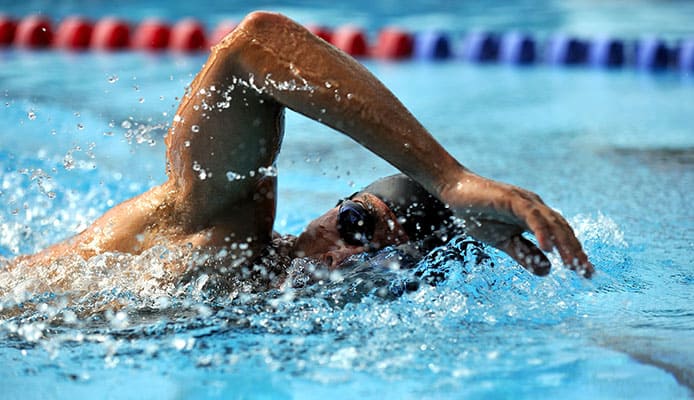
Everyone loves a good tune, whether you’re in the water or out! That’s why this guide is here to talk about swimming headphones!
That’s right, you read that correctly: swimming headphones. That means waterproof, Bluetooth headphones that you can have on your person while you’re in the water. This is the perfect way to merge your love of music with your love of water.
Swimming headphones allow you to bring your music with you wherever you go, even in the comfort of your own pool. Whether you like to exercise in the pool with some upbeat tunes, or you just enjoy music wherever you go, swimming headphones can be extremely useful!
Ready to get started? Let’s go!
OUR TOP PICK
Pyle Waterproof Swim Headphones
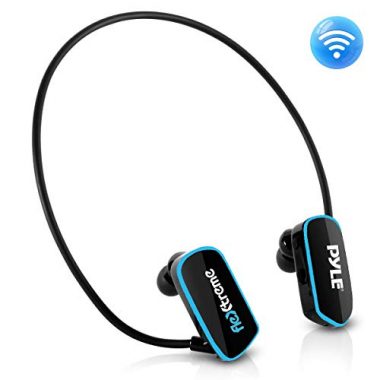
- Stand Out Features - Why We Love It
- Easy to use
- 10-hour battery life
- 10-hour battery life
EDITORS CHOICE
Sony Wearable Headphones
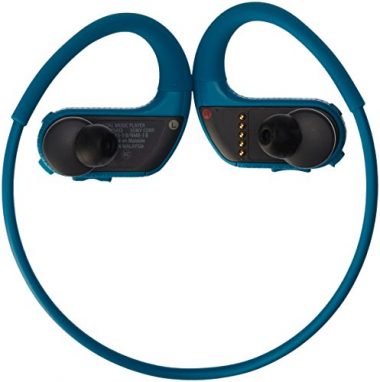
- Stand Out Features - Why We Love It
- Wireless
- Stores Music
- Wraps Around Your Head
BEST VALUE
AGPTEK Headphones
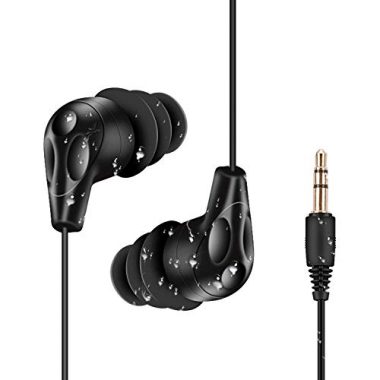
- Stand Out Features - Why We Love It
- Coiled cable
- Coiled cable
- High-quality sound
Swimbuds SPORT
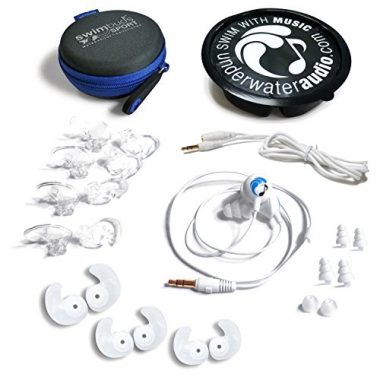
- Stand Out Features - Why We Love It
- 4 Different Earbud Styles
- Carrying Case Included
- Great Company for the Environment
HydroActive Short-Cord Waterproof
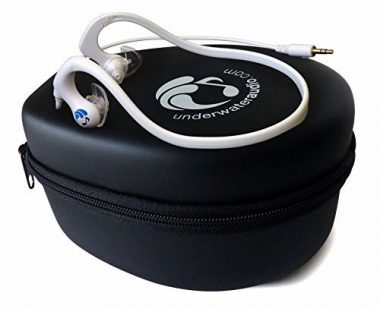
- Stand Out Features - Why We Love It
- 11 Earbud Tips Included
- Wrap-Around Cord
- Carrying Case
H20 Audio 100% Waterproof
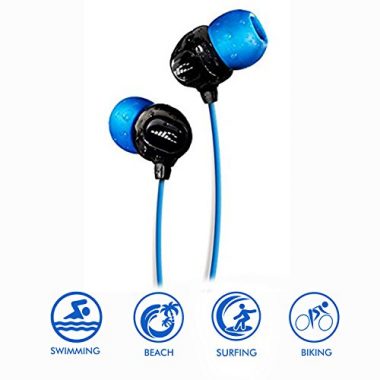
- Stand Out Features - Why We Love It
- Easy Fit
- Blue and Black Sleek Look
Sennheiser Adidas Sports
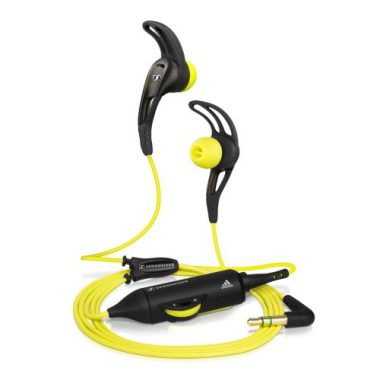
- Stand Out Features - Why We Love It
- Stable hold
- Stable hold
- Great sound
Sigomatech 100% Waterproof
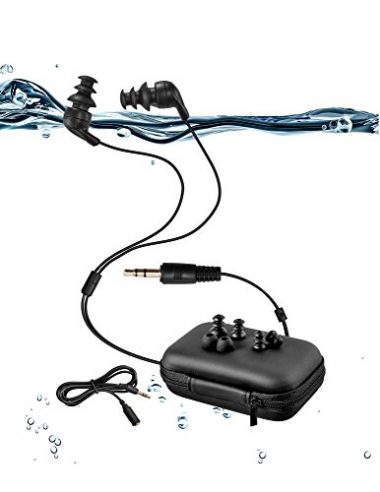
- Stand Out Features - Why We Love It
- Gold-plated jack
- Short cord
- Multiple earbuds
RHS MA750: Hi-Res Stainless Steel In-Ear
- Stand Out Features - Why We Love It
- Foam Tips
- Stainless Steel Design
- Incredibly Durable
Aquapac Headphones
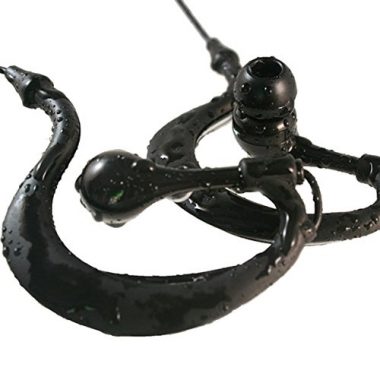
- Stand Out Features - Why We Love It
- PVC & vinyl
- Multiple silicone earbuds
- Multiple silicone earbuds
How To Choose A Pair Of Swimming Headphones – Buying Guide
Wired vs. Wireless
An important thing to think about when buying swimming headphones is how it connects to your device. If it’s wired, then you’re going to need a waterproof device as well.
While many phone companies and music makers are creating devices that are waterproof nowadays, you may have a phone that’s a few years old and can’t go in the water. In that case, you’ll want to invest in a waterproof bag that you can keep with you to connect your device to your waterproof headphones.
If you’re looking into getting a pair of waterproof headphones for exercising purposes, you’ll need to think about the length of the cord on wired headphones as well. You’ll want something with a shorter cord that won’t get in the way of your exercise.
With wireless headphones, you won’t have to worry about any of that. They’ll either connect via Bluetooth or hold the music itself. This can be the perfect fit for your life if you don’t want to worry about tripping up on any cords or find yourself without a waterproof device.
Extra Features
There’s a few extra features that you may want to look into when you’re buying swimming headphones. Each of these things depend on what you want in a product, so make sure to think about that when you’re looking into buying waterproof headphones. Along with features, you’ll also want to think about the durability of your swimming headphones; while it’s not a feature, some materials work better than others at lasting long.
Wrap-around bands are features on several different waterproof headphones, but they aren’t on all of them. They provide a secure place for your headphones can prevent them from being pulled off of your head in rough waters. They also won’t fall out of your ears like some earbuds do. However, this feature isn’t for everyone since it’s a constant pressure around your head
Some swimming headphones feature a noise-canceling function that can be great. If you want to surround yourself in your music, then looking into a pair of underwater headphones that shuts out all other noise is the way to go. This can be especially useful if you’re working out and want to forget about any distractions around you.
Some headphones work as music players as well, so you can store music on them and not have to worry about hooking it up to anything. This can be the perfect solution for anyone who doesn’t have a waterproof device or for those with cracked waterproof devices. These typically feature a wrap-around band, so it won’t fall off if anything happens and you won’t have any cords around you.
Another feature that most waterproof headphones have is their ability to act as earplugs against water. This is beneficial not only to your health, but to your comfort as well. Earplugs can protect your ears from a variety of infections caused by water getting trapped in your ears, so look for underwater headphones that protect you!
Budget
There’s no easy way around it, waterproof headphones can get quite expensive very quickly. With that in mind, you’ll want to keep your budget in mind when looking for a pair that suits you best.
The Swimbuds SPORT Waterproof Headphones are around $70, the RHA MA750s come out to almost $120, the H20 Waterproof Headphones are $40, the HydroActive Waterproof Headphones are $90, and the Sony NWWS413LMs come out to $75.
These prices range and quality does with it. It’s no surprise that the more expensive underwater headphones have more features and are more durable than the cheaper options, but it’s a good thing to think about what features you want before investing the money in the most expensive pair you can find.
Fit
Like regular headphones, headphones can be hard to fit into your ear. Luckily, many companies prepare for this and give you different sizes and options to earbud tips when you buy their swimming headphones.
Both the HydroActive and Swimbuds water headphones include four different kinds of swimming earplug tips for you to try and see which one you like best.
Fit is also important because most swimming headphones act as earplugs, keeping water out of your ear so that you can have a comfortable and safe time swimming. Letting water into your ears when you’re swimming can cause water to get trapped and breed infections that can cause you a lot of pain.
If you’re waterproof headphones aren’t fitting properly, then they aren’t doing their job at protecting your ears. Plus, earbuds falling out constantly while you’re swimming is annoying. It can also be hard to find headphones if they’re wireless and fall out in a large body of water, such as the ocean or lake. You’ll want a pair that fit great so that you won’t need to invest in a second pair.
Water-Resistant vs. Waterproof
There’s two different types of water equipment: water-resistant and waterproof.
Water-resistant simply means that they can get splashed a bit and might be able to take an accidental dip in shallow waters quickly. However, they are not meant to be used for things like swimming or diving.
Waterproof means that they device is completely protected against water. It can be submerged and nothing will break. These devices can go in the pool with you or withstand submersion in case you flip your kayak.
It’s also important to check out how deep waterproof devices can go. Water builds up pressure as you go down, which can cause issues for any technology. Every waterproof device will tell you have far they can be submerged before malfunctioning, so be sure to look at that before purchasing an item.
Water-resistant headphones are perfect if you plan to wear them doing water activities in calm areas where you’re not likely to capsize, such as a still lake. They also work well for intense exercise that causes you to sweat a lot or running (in case of any rainy days).
Waterproof headphones are much more suited to rough water activities and swimming in general. It can also be smart to plan ahead for even still waters and get waterproof headphones in case you do end up in the water; it’s better to be safe rather than sorry.
Sound Quality
For the best sound quality, you want wired headphones. A Bluetooth signal will be interrupted by re water, so, while you will get some music from a wireless connection, you will have so many interruptions and loss of quality, that the music will not enhance your time under the water. For the best sound quality, we recommend a wired connection.
Good sound quality will also come from a good fit. If your headphones do not fit correctly, then some of the sound is going to get out, and external sounds are going to seep in. This combination is going to lessen the sound quality. A loose-fitting pair of headphones is also going to annoy you, especially when you are in the water. Loose headphones are a nuisance, but that nuisance is amplified when the water is moving around them too. If you feel discomfort in your ears, then your mind is going to wander from the quality of the music.
You might also like: Swimmers Shampoo
Durability
There is nothing more annoying than having to replace something when it could have been avoided. Regular headphones come under a lot of wear and tear, but underwater headphones come under even more so. Not only are they subjected to the regular wear and tear of headphones, but there is also water (and often saltwater) to contend with too. The last thing you want is to have to replace headphones when we all know that spending a little more at the outset can save you from having to buy a product more than once.
If you invest a little money when you buy your earphones, you are going to be buying a more durable pair, and it is that durability which is going to ensure that they last for a longer period of time. A little more money spent means better materials (which will hold up to the water better) and better craftsmanship. Te headphones on our list have a track record or holding up to the worst conditions.
Warranty
There is a lot which can go wrong with headphones, especially when they are subjected to the conditions underwater. Salt water can damage headphones if they are not made well. With this in mind, you should look for a pair of headphones which are not only made well but which also come with a lengthy warranty. It is hard to fully test headphones before they are exposed to the rigors of the underwater world so we would recommend only buying a pair of headphones which come with a money back guarantee at the outset and a generous warranty to cover your prolonged use.
Quality
A pair of headphones are only as good as the materials used to create them. You would not use regular headphones under the water, so you should make sure that the headphones which you are purchasing are made from materials which are high-quality and well put together. A pair of quality headphones will keep the water out while giving you great sound quality.
FAQs
Q: How do swimming headphones work?
Waterproof headphones work very similarly to any other waterproof technology, like waterproof watches or cameras. The materials that they are made with are water resistant, and any kind of electrical currents are secured away from any openings.
Waterproof headphones can be a bit hard to understand technology-wise, but companies have been perfecting the waterproof idea for years now. Now with waterproof speaker technology, places have been creating tiny versions of that to fit into headphones.
Swimming earbuds are put directly in your ear like any other pair of headphones, and some act as earplugs. This means that they protect your ear from any water, which is a safety feature as well as a comfort issue.
Water in your ear can cause a variety of different painful infections that can ruin your summer. With swimming headphones, you won’t have to worry about that and you’ll have your music with you!
Q: Why do I need headphones for swimming?
Swimming headphones can revolutionize your swimming experience. The ability to bring your music with you on a personal level can make your swimming time much more enjoyable.
Waterproof speakers are great for a variety of things, but there’s something much more personal when your music is playing directly into your ears. It can also be a wonderful way to relax on the water in nature if you’re outside.
Besides the pure enjoyment of them, swimming headphones can also keep you safe. It can be dangerous to get water in your ears to much when you’re swimming; odds are some of that water will get stuck in there, and that can cause multiple different infections that hurt and require antibiotics.
Typically, waterproof headphones act as earplugs, so you won’t have to worry about getting water in your ear while you’re enjoying your day out in the sun. Many different kinds also make sure that you have the best way to keep water out by providing multiple different tips that all keep water out differently.
Q: How To Listen To Music While Swimming?
Listening to music under the water really improves the experience, just like listening to music while you are riding a bike or going for a walk. With some swimming headphones, you can listen to your heart’s content, but there are some things to think about to be able to listen to the music underwater.
Wired headphones are the way to go. Wireless technology does not work as well under the water so a direct line from your music player to your ear will be better than a Bluetooth connection. This means finding a waterproof music player to listen to when you are in the water. We recommend investing in a quality pair of earphones, and we also recommend investing in a quality music player. If you have both, then you are going to have a great experience listening to music under the water.
Q: How Is Waterproofness Achieved?
If you have ever bought a waterproof product, then you know that it is relatively easy to achieve waterproofness. All you have to do is cover the product in a waterproof material, and the water is kept out. The problem with headphones is that you cannot completely cover the headphone as you need somewhere for the sound to come out. The problem lies in the small holes n the earbuds. There are a couple of ways in which manufacturers create a waterproof barrier.
The first is to minimize the weak point of the headphones. By creating fewer holes and seams, there are fewer places for the water to get in. Most headphones are molded from one piece of plastic to create an effective water barrier.
The second thing which they do is to use a super-hydrophobic covering to coat the headphones, especially where the sound is coming out. This creates a barrier which keeps the water out but still conducts the sound.
Q: How To Get The Best Fit In The Water?
You need to maintain a tight fit in the water to prevent water from traveling around the earbud and irritating you. Water is denser than air, so it is harder to get a good fit from a pair of earbuds under the water than it is to get a good fit from a pair of regular headphones. When you are trying out earbuds for use in the water, you should look for earbuds which give a tighter fit than you are used to. This will stop them from being disturbed when you are under the water.
One way in which you can easily keep earbuds in your ears is by using a swimming cap. Swimming caps are often not preferred by most water sports enthusiasts, but they are an effective way of keeping headphones secured. If you are having problems keeping the headphones secured in your ears, then a swimming cap is a good place to start.
If you do not want to wear a swim cap, then you need to look at the earbuds which best fit your ears. Before you buy your earphones online, it is worth visiting a swim store to try on a variety of swimming headphones to find the style which fits best.
Q: Are Waterproof Headphones Good For Swimming In The Sea (Salt Water)?
Saltwater is a big problem for all water sports gear, but, as technology progresses, materials are holding up to the water better and better. Water will make headphones deteriorate faster than regular headphones would deteriorate and saltwater more so. Waterproof headphones will hold up well in fresh and salt water. To prolong the life of your headphones, take care of them and wash them regularly (see our guide below).
Q: How to Take Care Of My Headphones?
If you have been out in the water with your headphones, especially if you have been out in salt water, you should take the time to wash them thoroughly. This will help to prolong the life of your headphones and keep the sound quality at its best. It is easy to clean your headphones and will only take a few minutes of your time, but the simple act will help to save you a lot of money in replacing or repairing headphones. You should also do your best to avoid impacts and abrasions. The best way to prolong the life of your headphones is to keep them away from harm.
To clean your headphones, you should rinse them in fresh warm water. This will remove any salt and other particles from the material. If there is a lot of dirt build up, then you can wash them with some soapy water and a non-abrasive cloth. After you have washed or rinsed them, you should let them dry before storing them. When you do store your headphones, we recommend storing them in a hard case to protect them from damage. Many headphones will come with a case, and we would recommend purchasing a case if they do not.
Globo Surf Overview
The Swimbuds SPORT Waterproof Headphones are the best earbuds for swimming you can get on the market value-wise.
The variety of earbud tips you can choose from makes for the perfect fit no matter what you’re using your underwater headphones for. Each tip is designed for different ears and different activities, so you’ll have plenty of options to pick from, and you can even change them out should you change up your routine.
The wiring is extremely durable and will hold up no matter what kind of water activity you’re partaking in. The wires also keep the earbuds together, so you won’t have to worry about them falling out and you not being able to find them.
Swimbuds also provides a carrying case for you, so you won’t have to worry about them getting tangled while you’re traveling. This can prevent your swimming headphones from wear and tear, making them last even longer, especially combined with the durable wiring.
The short cord is another good tool for swimming headphones; by staying short, you won’t get caught up in your headphones, making them stay on easier and your swimming smoother. Swimbuds themselves are the original makers of short-cord headphones, so they’ve got a good idea on what they’re doing.
Even if you don’t like the short cord or need a longer cord, they provide an extension cord that is also waterproof. This is extremely handy and can save you money from having to invest in one as most other companies don’t send this along with it.
With the environmental state that the world is in, it’s always a great idea when companies try to reduce their contribution to the lessened state of the world. Swimbuds does just this by removing as much cardboard as possible in their products, creating an easier packaging experience for you, along with a better world. This small inclusion helps the company stand out compared to other waterproof headphone makers.
The $70 price tag is the best deal you can get for all the features that the Swimbuds SPORT Waterproof Headphones give you, so invest in them before your next swimming excursion!


